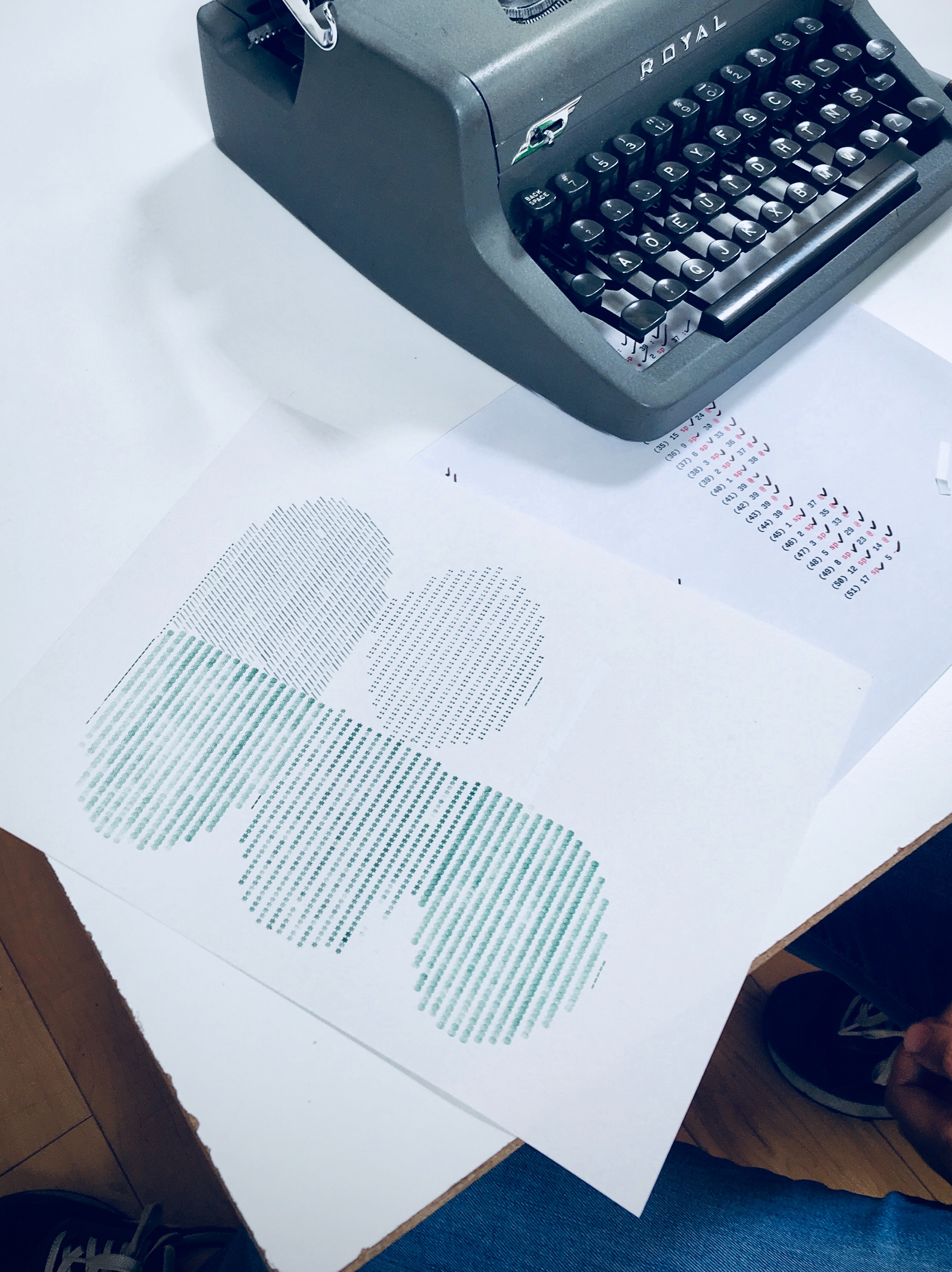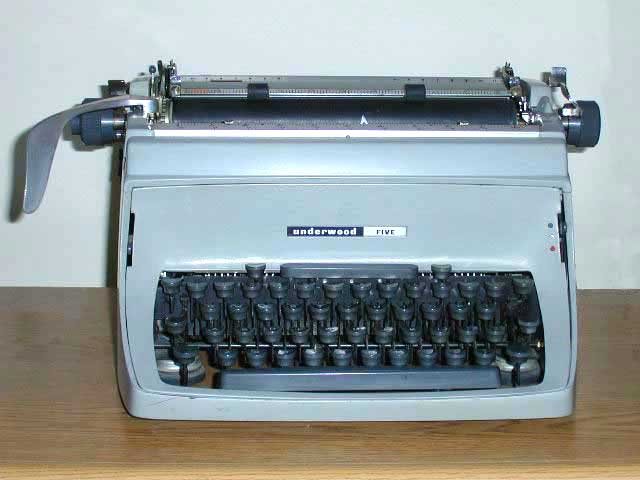|
Typewriter Mystery Game
A typewriter mystery game was a specific type of typewriter art popular in the mid-20th century. A typewriter owner would be presented with a set of instructions: press a key this many times, press another key, move on to the next line. Upon finishing the typing, a picture would emerge on the page. First lines of a simple typewriter mystery could look like this: Typewriter mystery games were published in magazines (such as Woman's Realm and ''The Journal of Business Education''), and collected in separate books. The “mystery” in the name refers to the fact that a visual result of the instructions would sometimes be presented on a different page, in the following issue of the magazine, or withheld altogether, making typing the only immediate way to discover the picture. The end result of a typewriter mystery game would be a picture similar to the later ASCII art ASCII art is a graphic design technique that uses computers for presentation and consists of pictures pi ... [...More Info...] [...Related Items...] OR: [Wikipedia] [Google] [Baidu] |
Typewriter Art
A typewriter is a mechanical or electromechanical machine for typing characters. Typically, a typewriter has an array of keys, and each one causes a different single character to be produced on paper by striking an inked ribbon selectively against the paper with a type element. At the end of the nineteenth century, the term 'typewriter' was also applied to a ''person'' who used such a device. The first commercial typewriters were introduced in 1874, but did not become common in offices until after the mid-1880s. The typewriter quickly became an indispensable tool for practically all writing other than personal handwritten correspondence. It was widely used by professional writers, in offices, business correspondence in private homes, and by students preparing written assignments. Typewriters were a standard fixture in most offices up to the 1980s. Thereafter, they began to be largely supplanted by personal computers running word processing software. Nevertheless, type ... [...More Info...] [...Related Items...] OR: [Wikipedia] [Google] [Baidu] |
Typewriter
A typewriter is a mechanical or electromechanical machine for typing characters. Typically, a typewriter has an array of keys, and each one causes a different single character to be produced on paper by striking an inked ribbon selectively against the paper with a type element. At the end of the nineteenth century, the term 'typewriter' was also applied to a ''person'' who used such a device. The first commercial typewriters were introduced in 1874, but did not become common in offices until after the mid-1880s. The typewriter quickly became an indispensable tool for practically all writing other than personal handwritten correspondence. It was widely used by professional writers, in offices, business correspondence in private homes, and by students preparing written assignments. Typewriters were a standard fixture in most offices up to the 1980s. Thereafter, they began to be largely supplanted by personal computers running word processing software. Nevertheless, type ... [...More Info...] [...Related Items...] OR: [Wikipedia] [Google] [Baidu] |
A Modern Typewriter Mystery Game
A, or a, is the first letter and the first vowel of the Latin alphabet, used in the modern English alphabet, the alphabets of other western European languages and others worldwide. Its name in English is ''a'' (pronounced ), plural ''aes''. It is similar in shape to the Ancient Greek letter alpha, from which it derives. The uppercase version consists of the two slanting sides of a triangle, crossed in the middle by a horizontal bar. The lowercase version can be written in two forms: the double-storey a and single-storey ɑ. The latter is commonly used in handwriting and fonts based on it, especially fonts intended to be read by children, and is also found in italic type. In English grammar, " a", and its variant " an", are indefinite articles. History The earliest certain ancestor of "A" is aleph (also written 'aleph), the first letter of the Phoenician alphabet, which consisted entirely of consonants (for that reason, it is also called an abjad to distinguish it fr ... [...More Info...] [...Related Items...] OR: [Wikipedia] [Google] [Baidu] |
Woman's Realm
''Woman's Realm'' was a British weekly women's magazine first published in 1958. One of the editors-in-chief was Joyce Wards. In 2001 it was merged with '' Woman's Weekly''. The Belle & Sebastian Belle and Sebastian are a Scottish indie pop band formed in Glasgow in 1996. Led by Stuart Murdoch, the band has released eleven albums. They are often compared with acts such as The Smiths and Nick Drake. The name "Belle and Sebastian" comes ... song "Women's Realm" makes reference to this magazine (with the singular "woman" appearing in the lyrics). '' SongMeanings'' References [...More Info...] [...Related Items...] OR: [Wikipedia] [Google] [Baidu] |
ASCII Art
ASCII art is a graphic design technique that uses computers for presentation and consists of pictures pieced together from the 95 printable (from a total of 128) character (computing), characters defined by the ASCII Standard from 1963 and ASCII compliant character sets with proprietary extended characters (beyond the 128 characters of standard 7-bit ASCII). The term is also loosely used to refer to #Other text-based visual art, text-based visual art in general. ASCII art can be created with any text editor, and is often used with free-form languages. Most examples of ASCII art require a Monospaced font, fixed-width font (non-proportional typeface, fonts, as on a traditional typewriter) such as Courier (typeface), Courier for presentation. Among the oldest known examples of ASCII art are the creations by computer-art pioneer Kenneth Knowlton from around 1966, who was working for Bell Labs at the time. "Studies in Perception I" by Ken Knowlton and Leon Harmon from 1966 sh ... [...More Info...] [...Related Items...] OR: [Wikipedia] [Google] [Baidu] |
A Typewriter Mystery Game In The Process Of Being Typed In
A, or a, is the first letter and the first vowel of the Latin alphabet, used in the modern English alphabet, the alphabets of other western European languages and others worldwide. Its name in English is ''a'' (pronounced ), plural ''aes''. It is similar in shape to the Ancient Greek letter alpha, from which it derives. The uppercase version consists of the two slanting sides of a triangle, crossed in the middle by a horizontal bar. The lowercase version can be written in two forms: the double-storey a and single-storey ɑ. The latter is commonly used in handwriting and fonts based on it, especially fonts intended to be read by children, and is also found in italic type. In English grammar, " a", and its variant " an", are indefinite articles. History The earliest certain ancestor of "A" is aleph (also written 'aleph), the first letter of the Phoenician alphabet, which consisted entirely of consonants (for that reason, it is also called an abjad to distinguish it fr ... [...More Info...] [...Related Items...] OR: [Wikipedia] [Google] [Baidu] |
Close-up Of A Typewritten Mystery Portrait With The Overtyping Clearly Visible
A close-up or closeup in filmmaking, television production, still photography, and the comic strip medium is a type of shot that tightly frames a person or object. Close-ups are one of the standard shots used regularly with medium and long shots (cinematic techniques). Close-ups display the most detail, but they do not include the broader scene. Moving toward or away from a close-up is a common type of zooming. A close up is taken from head to neck, giving the viewer a detailed view of the subject's face. History Most early filmmakers, such as Thomas Edison, Auguste and Louis Lumière and Georges Méliès, tended not to use close-ups and preferred to frame their subjects in long shots, similar to the stage. Film historians disagree as to the filmmaker who first used a close-up. One of the best claims is for George Albert Smith in Hove, who used medium close-ups in films as early as 1898 and by 1900 was incorporating extreme close-ups in films such as ''As Seen Through a Tele ... [...More Info...] [...Related Items...] OR: [Wikipedia] [Google] [Baidu] |


apart.jpg)

_(cropped).jpg)